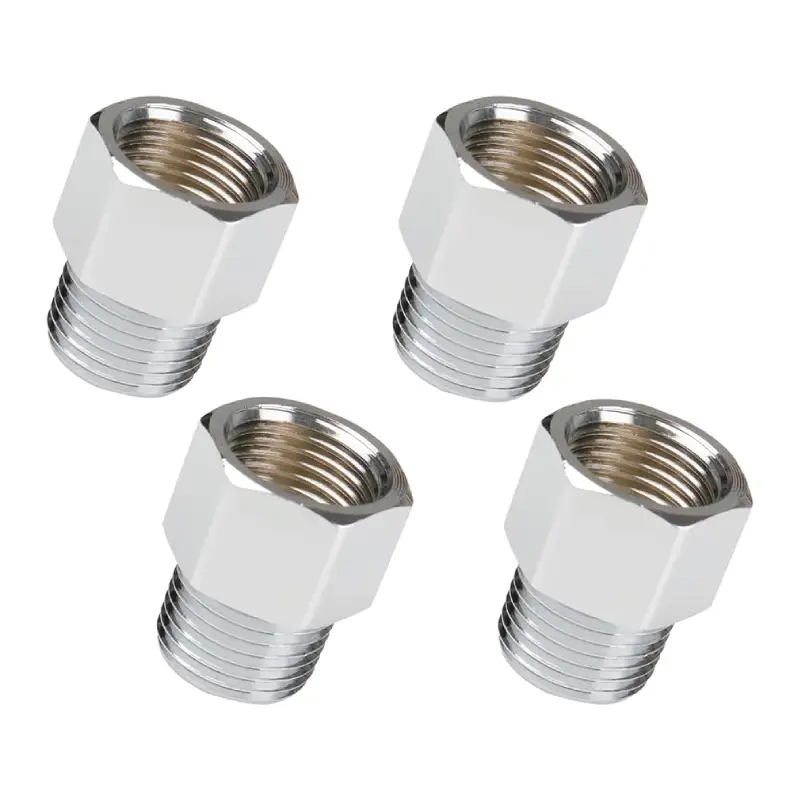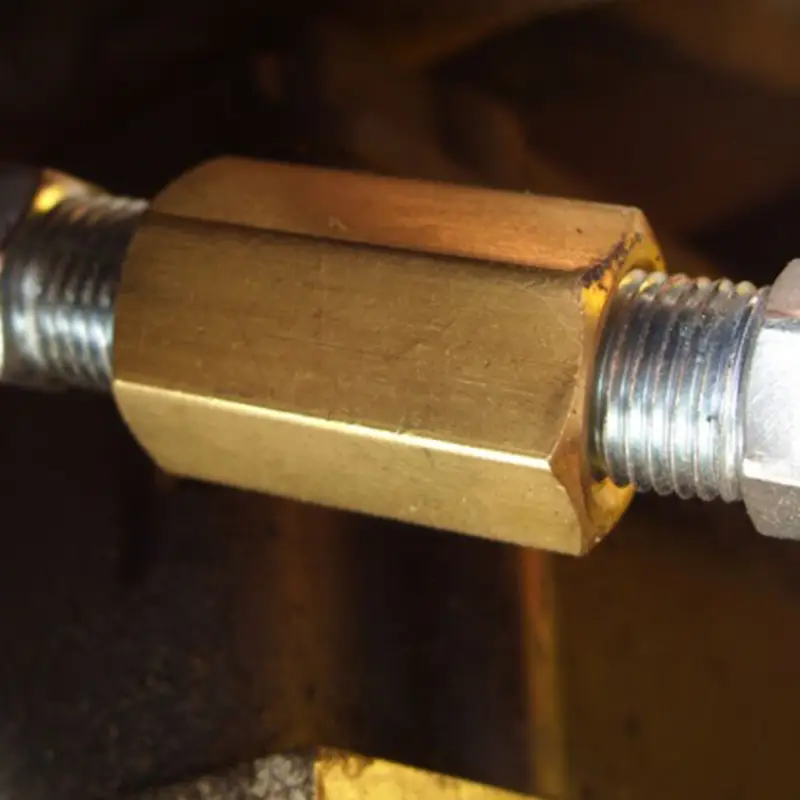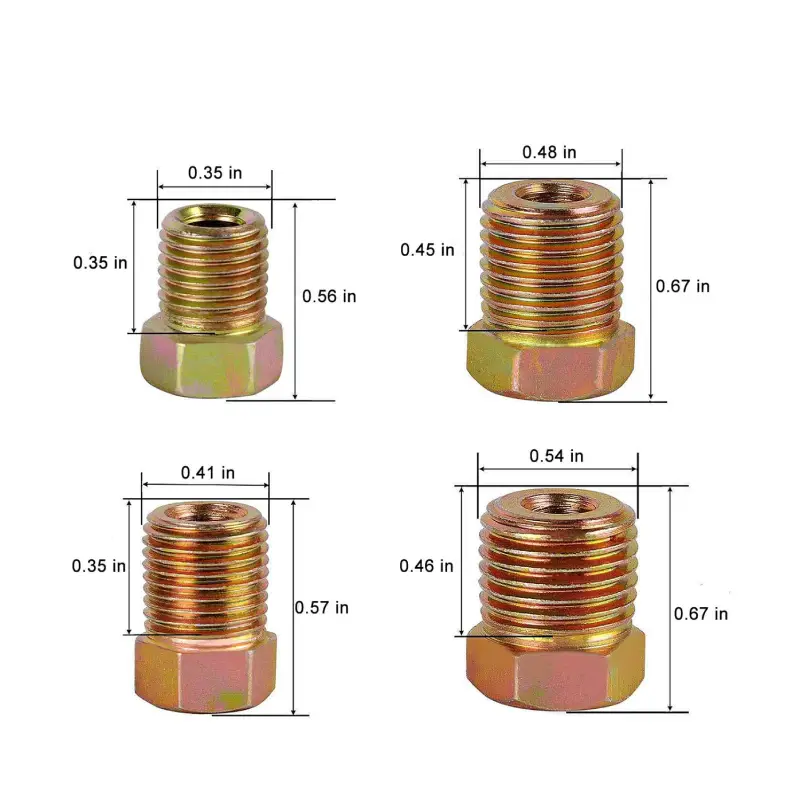When working with plumbing or hydraulic systems, selecting the right type of fitting is crucial for achieving a secure and efficient connection.
Among the most common fittings are FIP (Female Iron Pipe) and NPT (National Pipe Tapered). Understanding the differences: FIP vs NPT fittings can help you make informed decisions for your project.
Today,we will delve into the structure, common sizes, characteristics, and compatibility of these two fittings. If you have any questions about the content, feel free to contact us.
What is an NPT Fitting?
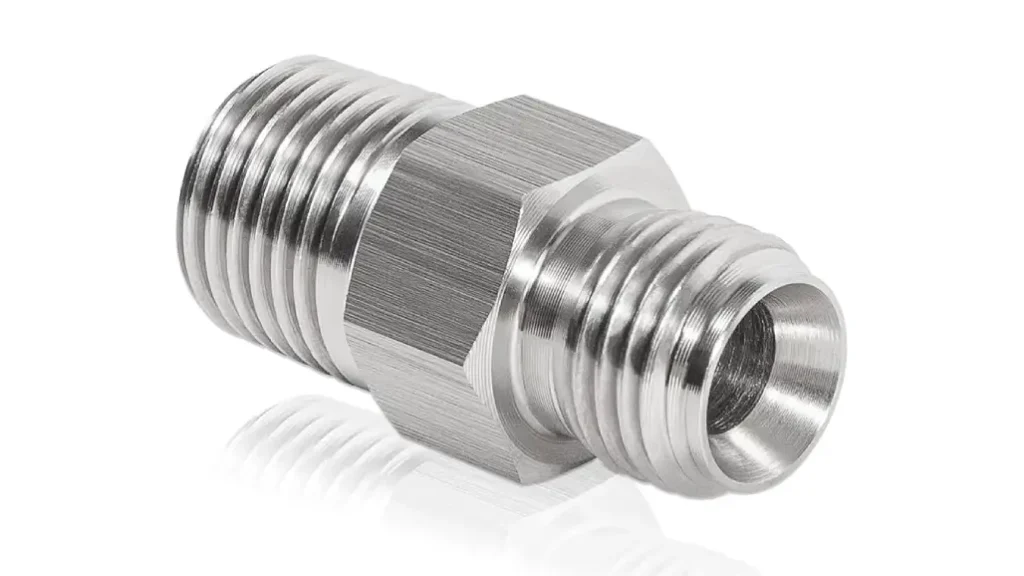
NPT, or National Pipe Tapered, fittings are a widely used standard in the United States for threaded pipe connections. These fittings feature a tapered thread design, ensuring a tight and leak-resistant seal when properly installed with thread sealant or tape.
Structure of NPT Fittings
NPT fittings have threads that are cut at an angle, creating a conical shape. This taper ensures that the threads fit tightly as they are screwed together. The angle of the threads is 60 degrees, which is a standard for achieving a secure fit.
Common Sizes of NPT Fittings
Below is a table listing common NPT fitting sizes and their corresponding pipe dimensions:
| NPT Size | Thread Pitch (TPI) | Outer Diameter (OD) |
| 1/8″ | 27 TPI | 0.405″ |
| 1/4″ | 18 TPI | 0.540″ |
| 1/2″ | 14 TPI | 0.840″ |
| 3/4″ | 14 TPI | 1.050″ |
| 1″ | 11.5 TPI | 1.315″ |
Applicable Scenarios of NPT Fittings
NPT fittings are like the workhorses of the fitting world. They’re used in a wide range of industries. In the plumbing industry, they’re the go-to for connecting pipes that carry water, gas, or other fluids. I remember one project where we supplied NPT fittings for a large-scale industrial plumbing system in a manufacturing plant.
The reliability of the NPT fittings was crucial, as any leak could have caused significant disruptions. In the automotive industry, they’re used in fuel and braking systems. Their ability to create a tight seal under pressure makes them ideal for these applications. In the industrial machinery, NPT fittings are used for fluid transfer, whether it’s oil, coolant, or other substances.
Characteristics of NPT Fittings
- Leak-resistant when used with sealing tape or paste.
- Durable and versatile.
- Adheres to ANSI/ASME B1.20.1 standards.
What is an FIP Fitting?
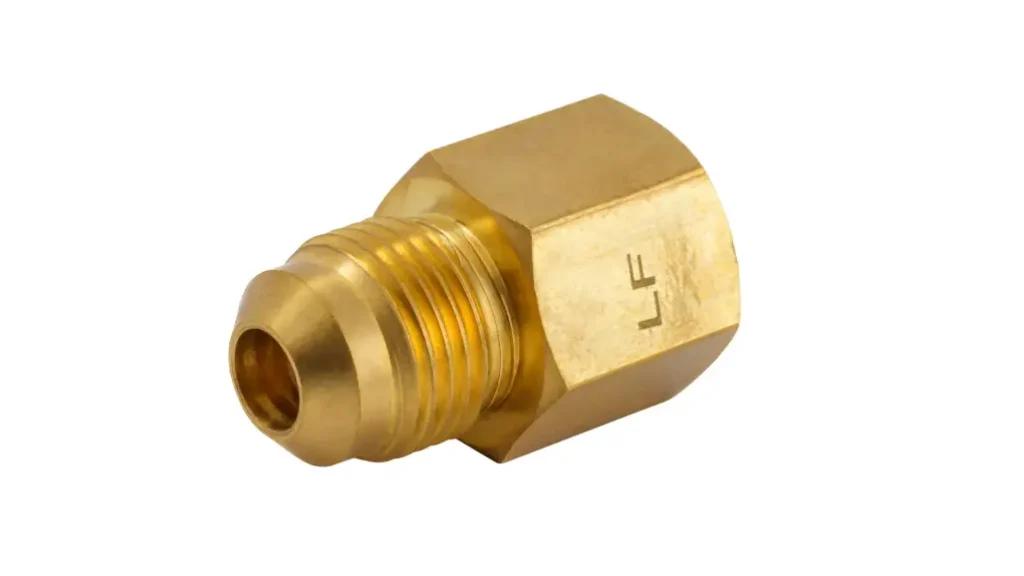
FIP, or Female Iron Pipe, fittings are internally threaded fittings that are designed to pair with male pipe threads. They are commonly used in water supply lines and other plumbing systems.
Structure of FIP Fittings
FIP fittings feature internal threads with a cylindrical or tapered design. These threads allow the fitting to securely mate with a corresponding male-threaded pipe or fitting, such as NPT.
Common Sizes of FIP Fittings
| FIP Size | Equivalent in Inches |
| 1/16″ FIP | 0.0625″ |
| 1/8″ FIP | 0.125″ |
| 1/4″ FIP | 0.25″ |
| 3/8″ FIP | 0.375″ |
| 1/2″ FIP | 0.5″ |
| 3/4″ FIP | 0.75″ |
| 1″ FIP | 1″ |
| 1 – 1/4″ FIP | 1.25″ |
| 1 – 1/2″ FIP | 1.5″ |
| 2″ FIP | 2″ |
Applicable Scenarios of FIP Fittings
FIP fittings are commonly used in applications where a connection with a male-threaded pipe is required. They’re often used in plumbing systems, especially in older buildings where cast-iron pipes are prevalent. I’ve seen them used in the renovation of historic buildings, where the existing plumbing infrastructure had male-threaded cast-iron pipes.
FIP fittings were the perfect choice to make new connections or replace old fittings. They’re also used in some industrial applications where the use of cast-iron components is preferred for their corrosion – resistance and strength.
Characteristics of FIP Fittings
- Typically made of brass, stainless steel, or PVC.
- Designed for easy installation.
- Often paired with NPT threads for compatibility.
FIP vs NPT Fitting
FIP (Female Iron Pipe) and NPT (National Pipe Thread) fittings are both integral to fluid transfer systems, yet they serve distinct purposes. Understanding their differences is crucial for selecting the appropriate fitting to ensure leak-free and efficient system operation.
Structure and Threads
- NPT Fittings: Feature tapered threads, creating a tighter fit as the threads are engaged.
- FIP Fittings: Have internal threads and can be tapered or straight depending on the design.
Compatibility
- NPT and FIP threads are often compatible, but proper sealing methods must be applied to ensure a leak-free connection.
Applications
- NPT Fittings: Ideal for high-pressure systems and industrial applications.
- FIP Fittings: Commonly used in residential and commercial plumbing.
| Comparison Aspect | NPT Fittings | FIP Fittings |
|---|---|---|
| Structure and Threads | Feature tapered threads, creating a tighter fit as the threads are engaged. | Have internal threads and can be tapered or straight depending on the design. |
| Compatibility | Often compatible with FIP threads, but proper sealing methods must be applied to ensure a leak – free connection. | Often compatible with FIP threads, but proper sealing methods must be applied to ensure a leak-free connection. |
| Applications | Often compatible with NPT threads, but proper sealing methods must be applied to ensure a leak-free connection. | Commonly used in residential and commercial plumbing. |
FIP vs MIP vs NPT
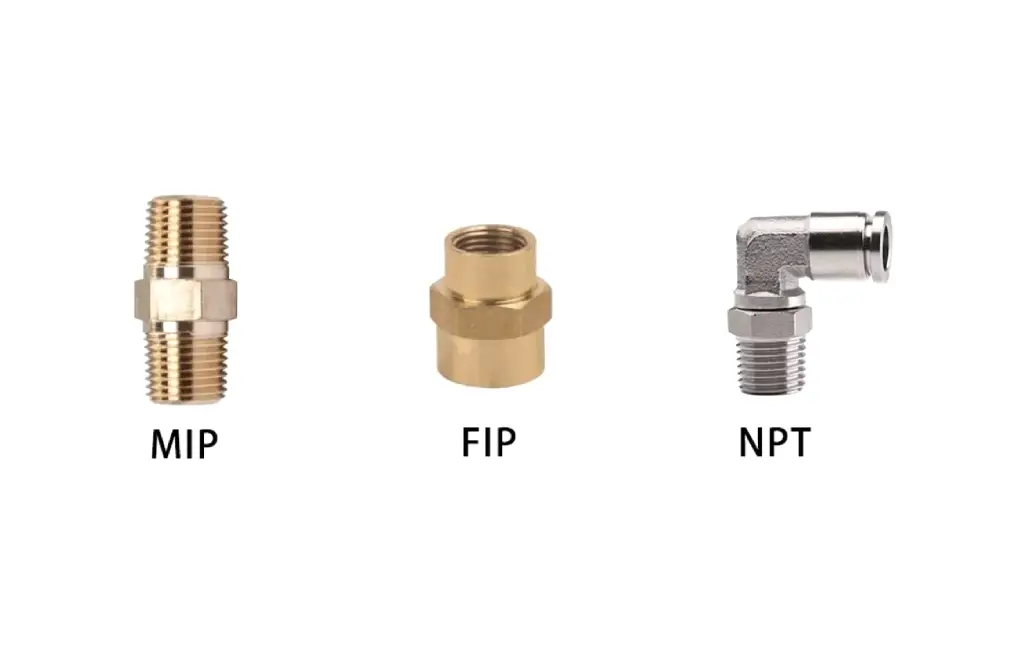
Understanding the differences between FIP (Female Iron Pipe), MIP (Male Iron Pipe), and NPT (National Pipe Thread) is essential for proper selection in fluid transfer systems. Each thread type serves distinct purposes and has unique characteristics.
FIP (Female Iron Pipe): FIP designates a female threaded connection, regardless of whether the threads are straight or tapered. It’s used to connect to male threaded pipes or fittings. FIP fittings are versatile, suitable for various applications from residential plumbing to industrial systems. The “FIP” designation focuses on the connection type rather than the thread taper itself.
- Female threaded connection.
- Connects to male threaded pipes or fittings.
- Versatile for various applications.
- Designation indicates connection type, not thread taper.
MIP (Male Iron Pipe): MIP refers to a male threaded connection with straight, parallel threads. These threads are typically used in low-pressure applications, such as household plumbing and irrigation systems. MIP connections are designed for ease of assembly and disassembly, but they often require thread sealants to prevent leaks. The straight thread design is not intended for high-pressure environments.
- Male threaded connection.
- Straight, parallel threads.
- Used in low-pressure applications.
- Requires thread sealants for leak prevention.
NPT (National Pipe Thread): NPT threads, whether male or female, are tapered, creating a pressure-tight seal when tightened. This tapered design makes NPT connections ideal for high-pressure applications in hydraulic, pneumatic, and industrial systems. The threads compress against each other as they are tightened, forming a robust mechanical seal. NPT is a standard in industries where leak-free connections are critical.
- Tapered threads.
- Creates a pressure-tight seal.
- Ideal for high-pressure applications.
- Standard in hydraulic, pneumatic, and industrial systems.
Comparison Chart about FIP MIP NPT:
| Feature | FIP (Female Iron Pipe) | MIP (Male Iron Pipe) | NPT (National Pipe Thread) |
| Thread Type | Female (straight or tapered) | Male (straight, parallel) | Male or Female (tapered) |
| Connection Type | Female | Male | Male or Female |
| Thread Design | Varies | Straight, parallel | Tapered |
| Pressure Rating | Varies | Low | High |
| Sealing Mechanism | Thread sealant dependent | Thread sealant dependent | Tapered thread compression |
| Application | Various plumbing, industrial | Low-pressure plumbing, irrigation | Hydraulic, pneumatic, industrial |
| General Use | Connects to Male | Connects to Female | Creates Pressure Tight Seal |
How to Choose Between NPT and FIP Fittings?

Choosing between NPT and FIP fittings hinges on understanding their roles within a piping system. NPT fittings, with their tapered threads, are designed for creating pressure-tight seals, ideal for high-pressure applications. FIP fittings, featuring female threads, are used to connect to male threaded pipes or fittings. Consider the system’s pressure, temperature, and fluid type to determine the appropriate fitting. Ensure compatibility between the fitting materials and the fluid being conveyed.
Evaluate the connection type and accessibility. NPT fittings are often used in conjunction with male threaded pipes, creating a secure, leak-free joint. FIP fittings, on the other hand, are versatile for connecting various components, but require a male threaded counterpart. Consider the space constraints and the ease of assembly when making your selection.
NPT Fittings:
- Ideal for high-pressure applications requiring a tight seal: NPT’s tapered threads create a robust, leak-resistant connection, essential for systems with significant internal pressure.
- Tapered threads create a mechanical seal when tightened: As the fitting is tightened, the threads compress, forming a secure seal that prevents fluid or gas leakage.
- Commonly used in hydraulic and pneumatic systems: These systems demand high-pressure tolerance and leak prevention, making NPT fittings the standard choice.
- Requires a male NPT threaded counterpart for connection: NPT fittings must be paired with male NPT threads to achieve a proper, leak-free seal.
FIP Fittings:
- Female threaded fittings for connecting to male threaded pipes: FIP fittings provide a female threaded connection point, allowing for versatile connections to male threaded components.
- Versatile for connecting various components within a system: FIP fittings facilitate connections between pipes, valves, and other components, offering flexibility in system design.
- Used in plumbing and general fluid transfer applications: Their adaptability makes them suitable for a wide range of applications, from residential plumbing to industrial fluid transfer.
- Requires a male threaded pipe or fitting for connection: FIP fittings are dependent on the presence of male threaded components to function within a system.
Conclusion
Understanding the differences between FIP and NPT fittings is essential for selecting the right component for your project.
Both have unique features and can often be used interchangeably with proper sealing. If you’re interested in our high-quality fittings, visit our homepage or contact us for a product catalog.
Is there a difference between FIP and NPT?
Yes, there are several differences between FIP and NPT. The most significant difference is in their thread design. NPT has tapered threads, which seal through compression when tightened, while FIP has straight threads and relies on a gasket or O-ring for sealing.
Additionally, their applications can vary, with NPT being more common in modern plumbing and industrial applications, and FIP is often used in older plumbing systems with cast – iron pipes.
Does FIP connect to NPT?
In general, FIP does not connect well to NPT. The difference in thread design makes it difficult to create a proper seal. A male NPT thread will not fit correctly into a female FIP thread due to the taper of the NPT thread. The lack of taper in the FIP thread means it cannot engage properly with the NPT thread, resulting in a loose connection that is prone to leaks.
Is NPT compatible with FIP?
No, NPT is not compatible with FIP. The differences in thread design, sealing mechanism, and how the fittings mate make it impossible to create a reliable connection. The tapered NPT threads and the straight FIP threads are designed to work with different types of mating components, and attempting to use them together will likely lead to system failures.
What is FIP in fitting?
FIP stands for Female Iron Pipe. FIP fittings are designed with a female-threaded end to connect with male-threaded pipes. They are often made of cast iron and use a gasket or O-ring to create a seal. They are commonly used in plumbing systems, especially in older buildings where cast-iron pipes are prevalent.
Are FIP threads tapered?
No, FIP threads are not tapered. They are straight threads. This is in contrast to NPT threads, which are tapered. The straight – thread design of FIP fittings requires the use of a gasket or O – ring to create a seal, while the tapered NPT threads create a seal through compression.
Where to buy hydraulic fittings?
You can get hydraulic fittings customized from us. Our brand is Dingfeng, and we offer a full range of products. Feel free to contact us at any time for all your fitting needs.
Difference Between NPT and FIP Threads?
NPT (National Pipe Thread) and FIP (Female Iron Pipe) threads differ primarily in their design and application. NPT threads, whether male or female, are tapered, meaning the thread diameter increases or decreases along the thread length. This tapered design creates a mechanical seal when tightened, making NPT connections ideal for high-pressure applications. FIP threads, on the other hand, are female threads that can be either straight or tapered, depending on the specific application. However, the designation “FIP” itself refers to the female connection, not the thread taper.
The key distinction lies in the role each thread type plays in a piping system. NPT threads, due to their tapered nature, are designed to create a leak-proof seal, crucial for hydraulic and pneumatic systems. FIP threads, being female connections, are used to connect to male threaded pipes or fittings, regardless of whether those threads are straight or tapered. This means an FIP fitting can have NPT threads, but the “FIP” designation simply indicates it’s a female connection.
